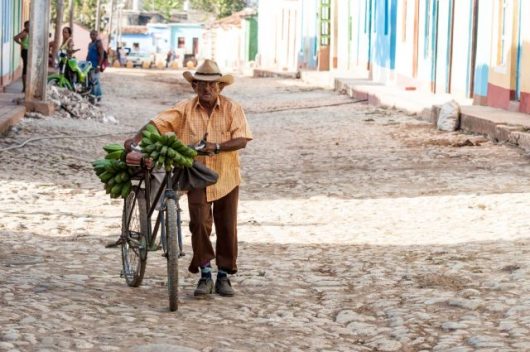Uncovering 10 Facts About Hunger in Cuba

The Republic of Cuba is home to nearly 11.5 million people and has lasted through a communist regime for more than 50 years. U.S. sanctions were designed to dislodge the leader, Fidel Castro, and his regime; surprisingly, the island of Cuba has survived long after the collapse of its biggest supporter, the Soviet Union.
During the last 50 years, the government of Cuba has worked to eliminate poverty and hunger; however, many analysts argue that the economic system envisioned by Fidel Castro has not lived up to its plans. The Revolution was centered around the idea of eliminating a class structure, yet, the country has been left poor.
Nevertheless, the government of Cuba has continued its support of Castro’s ideology and is now working to eradicate issues such as hunger. To learn more about the country’s shortcomings and successes, here are the top 10 facts about hunger in Cuba.
Facts About Hunger in Cuba
- Social protection programs implemented within the last 50 years have greatly helped Cuba reduce hunger. The government of Cuba provides monthly food baskets, mother-and-child health care and school feeding programs. These programs are reliant on food imports and are dependent on the national budget.
- Guided by the government’s commitment to leave no Cuban unprotected, the leadership of Cuba reformed its economic model. This process began in 2011 and had the goals to reduce costs, increase the viability of social programs and boost overall efficiency. Food scarcity was recognized as one of the nation’s top priorities.
- In 2015, about 3.5 million people visited Cuba, causing a surge in the demand for food. Food scarcity was in part due to the U.S. embargo, as well as poor planning by the Cuban government. The foods that many families relied on went instead to restaurants that catered to the increase in tourism. The prices of essential food have risen exuberantly, leaving the average Cuban at a big loss.
- The typical Cuban family has poor nutrition as there is often very little food diversity, and Cubans traditionally eat very few vegetables. In 2011, the government began its attempts to implement its National Plan for the Prevention and Control of Anemia. Children under the age of five are specifically targeted in this effort; however, by the end of 2015, it was reported that 31.6 percent of children aged two, and as many as 39.6 percent of children six months or younger, suffer from anemia.
- There are still periods of food shortage in Cuba. Maria Julia, a single mother from Santiago de Cuba, described the food shortages that occurred in December 2014 and January 2015. She and countless other Cuban families had no access to chicken — the main protein in Cuban cuisine. Schools could not provide lunch or snacks for the children during these periods, further challenging struggling parents.
- The Cuban government covers half of an individual’s nutritional needs at a very low cost. The United Nations Food and Agriculture Organization recently honored Cuba for its low levels of malnutrition and hunger. Although unable to provide an average Cuban with all their nutritional needs, the government has managed to provide supplements and extra rationed items for the elderly, children and those suffering from chronic illnesses.
- Food scarcity has caused families to struggle to create main meals; often by the end of the month, most Cuban families have usually already eaten their ration. This results in difficulty finding sustainable meals, and families tend to rely on social networks to acquire their essential food items.
- In dealing with food scarcity, Cubans had to adapt to different food than their traditional preferences. Many refuse to accept available food as viable, yet, they continue to consume the food out of necessity. The food available through the government does not reach cultural standards, so the Cuban people’s disdain is a sort of symbolic rejection.
- Nitza Villapol, one of the main Cuban food authorities, has encouraged the change in the traditional Cuban diet through cookbooks aimed at the average Cuban. The cookbooks and state-approved television shows teach Cubans to cook without staple foods. Food scarcity made traditional ingredients like pork, milk, butter and bread extremely difficult to attain.
- After the crash of the Soviet Union in 1991, Cuba’s sugar economy plummeted for nearly a decade. The government ordered the shutdown of 71 out of 156 sugar refineries in Cuba. Farming land that was once used for sugar is now used to supplement the monthly rations given by the state. Farmers generate cooperatives so that locals can survive off state-sponsored food in conjunction with local farming.
Independence and Eliminating Hunger
Currently, the small island of Cuba imports 60-80 percent of its food. State officials are encouraging the continuation of cooperative farming to avoid dependency on other nations. Additionally, urban farming started in the 1990s and is regarded by the government as an acceptable mean to supplement the monthly rations.
The island of Cuba is working very hard to eliminate hunger. These top ten facts about hunger in Cuba demonstrate both the areas in which the goals of the regime have fallen short, as well as the successes of Castro’s vision.
– Stefanie Babb
Photo: Unsplash
